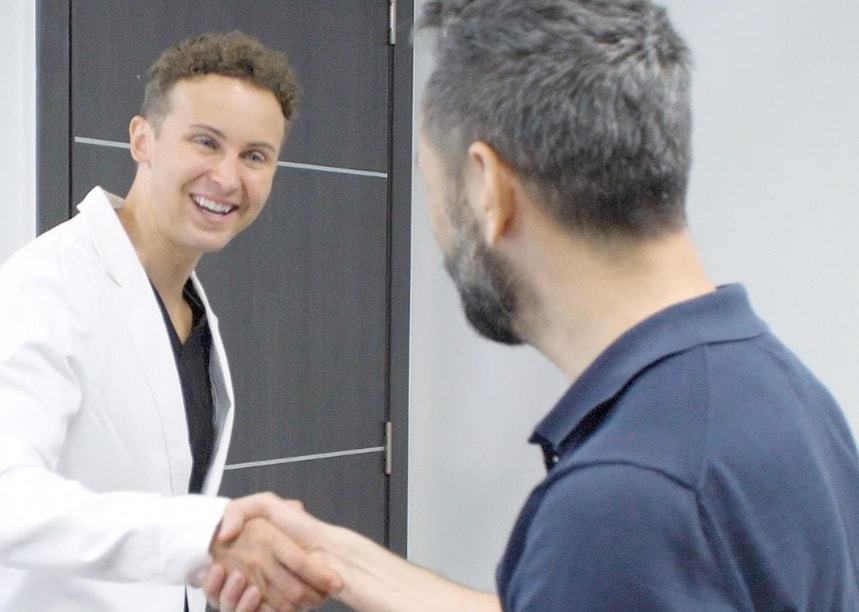If you have been experiencing aching or tired legs, or are starting to see a lot of veins bulging out of your lower limbs, it’s time to make an appointment with a reputable vein doctor, as these are signs of venous insufficiency. You can expect the highest standard of care from vein doctors at Vein Treatment Center New York. Click HERE to book an appointment at our excellent vein center, or keep reading to learn more about venous insufficiency and how you can seek treatment for this condition.
Normal Vein Function
In order to understand how something goes wrong, it’s important to first understand how it is supposed to work normally. Veins throughout the body have one-way valves that ensure that blood makes its way to the heart but doesn’t flow back out to the limbs. Veins in the legs have to work extra hard because they are fighting the force of gravity to return blood to the heart.

Cause of Venous Insufficiency
When the valves in the veins of the legs become leaky, gravity takes over and blood flows backwards, pooling in veins near the feet. When this occurs in a single vein, it is referred to as venous reflux; however, when this occurs in several veins, it is referred to as venous insufficiency, since the venous system is no longer able to adequately return blood to the heart.
Symptoms of Venous Insufficiency
Because of fluid buildup, the pressure in the vein rises with time, resulting in bulging veins. These bulging veins are referred to as spider veins or varicose veins based on their size, appearance, location, and degree of pain. Vein disease can also cause heaviness, soreness, and swelling in the legs and ankles, especially towards the end of the day when you have been active and more blood has a chance to make its way down to the legs.
Many individuals believe that all of these signs and symptoms are just part of aging, but venous insufficiency can be cured! Venous insufficiency is a rather common disorder that affects one in every four persons, and the symptoms include the varicose and spider veins mentioned above. This is an abnormal but treatable condition, so it is important to set up an appointment with a vein specialist in venous medicine to make sure that the damage to the veins does not lead to any further problems down the road.
Once you are evaluated and diagnosed by a board-certified specialist in venous medicine, he or she can make recommendations on what kind of vein treatment would be best for your individual case, which in most instances is a minimally-invasive procedure to fix the “leaky pipe” and close unhealthy veins to make sure that blood can flow in the right direction and prevent build-up.
The saphenous vein, which feeds into all of the veins in the lower extremities, is usually the source of venous insufficiency. The initial step in most doctor-recommended vein disease treatment strategies is to close the saphenous veins, which can be accomplished with minimally invasive therapies. This means the vein doctor will only have to make a small incision to perform the procedure, which means lower risk, shorter procedural time, and less recovery time after leaving the vein clinic.
There are a variety of treatment options offered at a vein treatment clinic, including VenaSeal, Radiofrequency Ablation, and Varithena.These treatment options all use the same basic approach: seal up the damaged vein to reroute the blood through healthier veins, thus improving blood circulation overall. All of these methods are minimally invasive and have both a short procedural time and recovery time.
VenaSeal
VenaSeal is a vein adhesive that is used to shut the saphenous vein in the leg that causes varicose veins and does not require a local anesthetic injection. When the VenaSeal glue is applied to the vein, it operates practically instantly to seal the diseased vein, rerouting the blood naturally through the healthy veins in your legs.
Radiofrequency ablation
Radiofrequency ablation is another non-surgical minimally invasive procedure that begins with the injection of a local anesthetic. Once the numbing solution has been given along the length of the vein, a catheter is inserted into the unhealthy vein using ultrasound imaging. The catheter is then triggered and heat energy is supplied to the vein walls to close them down.
Sclerotherapy and Varithena
A vein specialist uses small needles to inject a drug called a sclerosant into damaged veins during a sclerotherapy procedure. This medication irritates the vein linings, causing them to clump together and close the damaged vein, pushing blood through healthier veins instead. The parts of the vein injected with medication will shrink over time due to a lack of blood flow, reducing the overall appearance of spider veins. Varithena is a sclerotherapy foam injected by a vein doctor into the vein to reduce both the appearance and symptoms of large, bulky varicose veins.
Our Vein Treatment Clinic location in New York City is conveniently located in the heart of New York (the Big Apple!), near notable landmarks such as Madison Square Park. You can schedule your consultation with any of our three incredible vein doctors and be assured of the best possible care. Make an appointment at the Vein Treatment Clinic New York to reverse your venous insufficiency today!